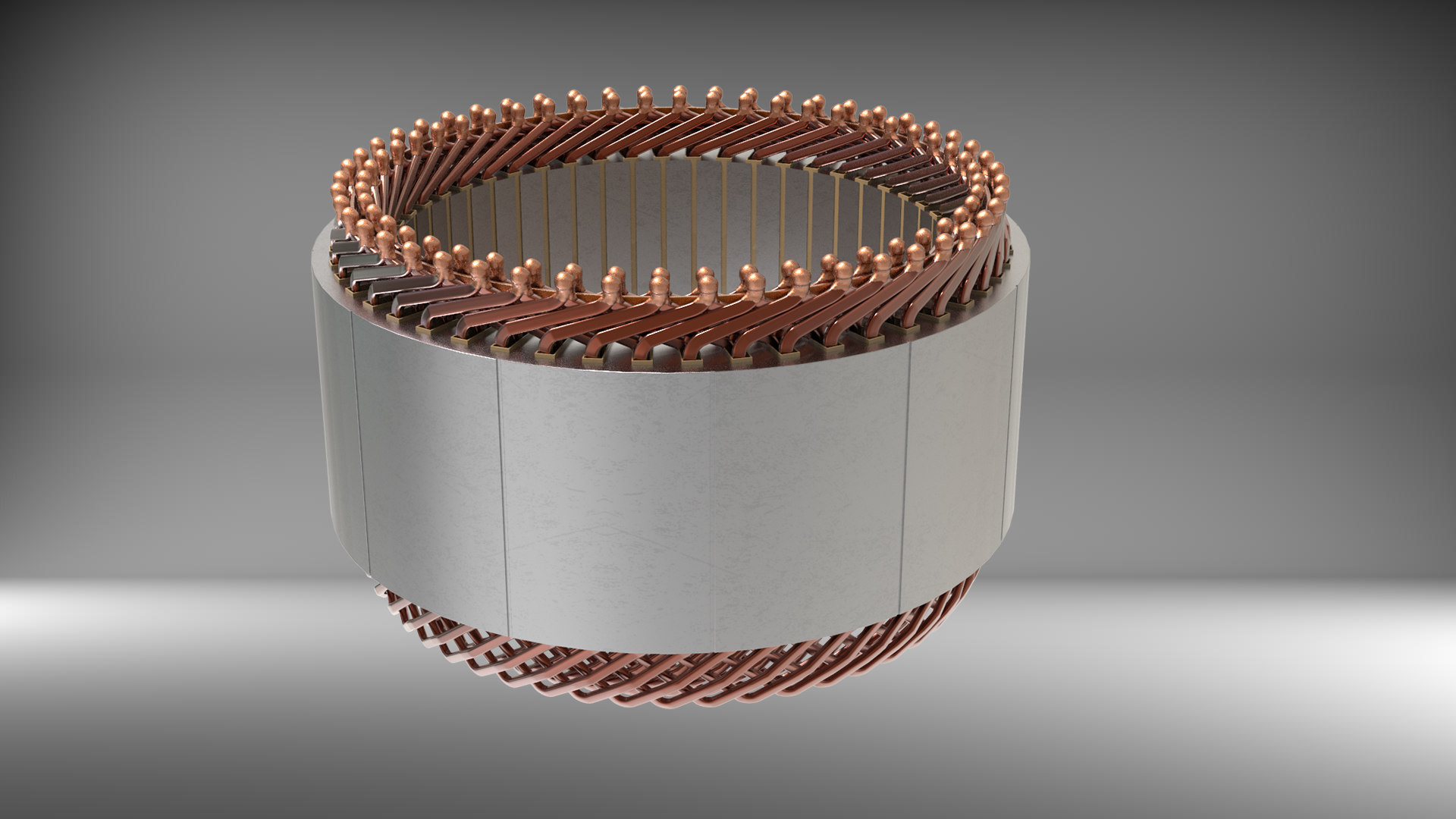The progress of technology in the field of electric motors is concerned with more than just performance; it is also concerned with sustainability. One unique technique shines out when we dig into the complicated world of electric motor manufacturing: hairpin stator winding. This ground-breaking technique has made headlines not just for its effectiveness in improving motor performance, but also for its potential environmental ramifications. In this in-depth blog post, we will unravel the green threads woven throughout the process, investigating the environmental issues of hairpin stator wrapping in electric motor manufacture.
Traditional winding methods in electric motor manufacturing involve using round wires and coil windings. However, hairpin stator winding deviates from this norm by utilizing flattened, rectangular conductors shaped like hairpins.
The unique design of hairpin stator windings offers several advantages. It enhances the motor’s power density, improves efficiency, and reduces the overall size of the motor. These benefits translate into more compact and energy-efficient electric motors, which is especially crucial in the context of electric vehicles and other applications requiring high-performance, compact motors.
Green Threads: Environmental Implications
Now, let’s shift our focus to the environmental implications of hairpin stator winding. As industries worldwide are increasingly adopting sustainable practices, it becomes imperative to scrutinize the ecological footprint of emerging technologies. In the case of hairpin stator winding, the environmental implications are multifaceted.
Material Efficiency and Resource Conservation
One of the primary environmental advantages of hairpin stator winding lies in its material efficiency. The flattened, rectangular conductors used in this method often result in reduced material waste compared to traditional winding techniques. The optimization of materials not only contributes to cost-effectiveness but also aligns with the principles of sustainable manufacturing.
Furthermore, the resource conservation aspect extends to the manufacturing process itself. Hairpin stator winding typically requires fewer materials, such as insulation and copper, compared to conventional methods. This reduction in raw material consumption directly correlates with a diminished environmental impact, promoting responsible resource utilization in the electric motor industry.
Energy Efficiency and Emissions Reduction
Beyond material considerations, the energy efficiency gains achieved through hairpin stator winding play a pivotal role in its positive environmental impact. Electric motors utilizing this winding technique often exhibit higher efficiency levels, resulting in reduced energy consumption during operation.
In applications like electric vehicles, where energy efficiency is critical for extended battery life and increased range, the adoption of hairpin stator winding can contribute to a substantial reduction in overall energy consumption. This, in turn, leads to lower greenhouse gas emissions, aligning with global efforts to combat climate change and promote cleaner technologies.
Life Cycle Analysis
To comprehensively assess the environmental implications of hairpin stator winding, a life cycle analysis (LCA) is essential. LCAs evaluate the environmental impact of a product or process from raw material extraction to end-of-life disposal. In the case of hairpin stator winding, the LCA reveals a nuanced perspective on its ecological footprint.
1.Manufacturing Phase: Reduced Carbon Footprint
During the manufacturing phase, the optimized use of materials and enhanced energy efficiency contribute to a reduced carbon footprint. The streamlined production process associated with hairpin stator winding aligns with the principles of sustainable manufacturing, making it a viable choice for environmentally conscious industries.
2.Operational Phase: Energy Efficiency Benefits
As mentioned earlier, the improved energy efficiency of motors employing hairpin stator winding has significant implications during the operational phase. Reduced energy consumption translates into lower greenhouse gas emissions, especially in applications with high motor utilization, such as industrial machinery and electric vehicles.
3.End-of-Life Phase: Recycling and Disposal Considerations
Considering the end-of-life phase is crucial for a holistic assessment. The materials used in hairpin stator winding, such as copper and insulation, are commonly recyclable. Proper recycling practices can further minimize the environmental impact by recovering valuable materials and diverting waste from landfills.
Challenges and Considerations
While the environmental implications of hairpin stator winding are largely positive, it’s essential to acknowledge potential challenges and considerations associated with its adoption.
Complexity of Manufacturing Process
The manufacturing process for hairpin stator winding may be more complex than traditional winding methods, requiring specialized equipment and expertise. This complexity could pose challenges for smaller manufacturers or those transitioning from conventional practices.
Dependency on Raw Materials
While hairpin stator winding optimizes material use, it is still dependent on raw materials like copper. Fluctuations in the availability and prices of these materials can impact the overall sustainability of the method.
Conclusion
In conclusion, the environmental implications of hairpin stator winding in electric motor manufacturing are significant and multifaceted. The method’s material efficiency, energy efficiency benefits, and alignment with sustainable manufacturing principles make it a promising contender in the pursuit of greener technologies.
As industries continue to prioritize sustainability, the adoption of hairpin stator winding can play a pivotal role in reducing the environmental impact of hairpin stator manufacturing. However, it’s crucial for manufacturers, policymakers, and stakeholders to address challenges and work collaboratively to ensure a seamless transition to this innovative winding technique.
In the grand tapestry of technological advancements, the threads of environmental responsibility are interwoven with progress. Hairpin stator winding stands as a testament to the industry’s commitment to not only push the boundaries of efficiency but to do so with a mindful eye on the planet we call home.
